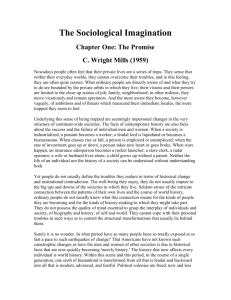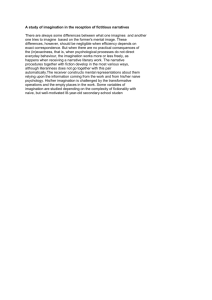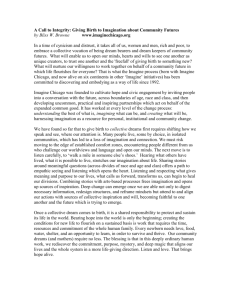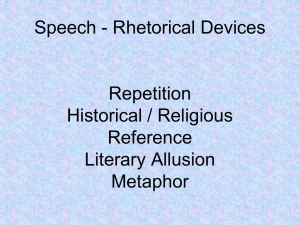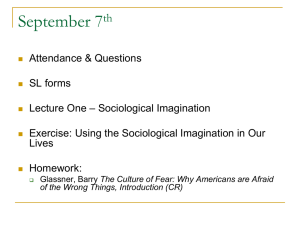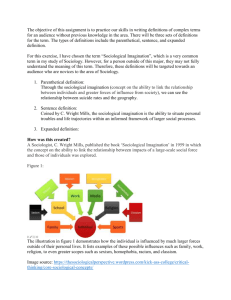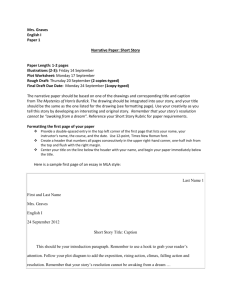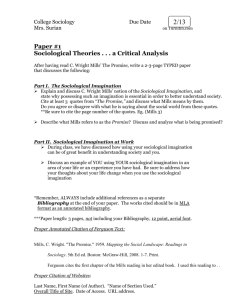Sociological Imagination & the American Dream - sociology 101
advertisement
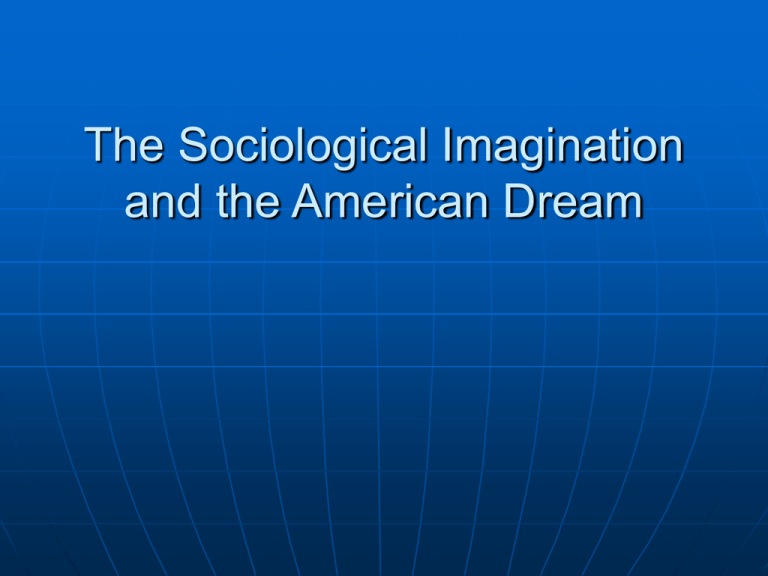
The Sociological Imagination and the American Dream Sociological Imagination C. Wright Mills, 1959 “The Intersection of History and Biography within the context of Social Structure.” Sociology helps us to see our lives and the lives of others in social and historical context. Each Component is Essential History: how a society came to be and how it is changing and how history is being made in it. The great narrative. Biography: the nature of "human nature" in a society; what people in a particular society are experiencing, and how they interpret that experience. • Human nature is a social creation. Social structure: how the various institutional orders in a society operate, which ones are dominant, how they persist and how they change. Sociological Imagination, Restated How individual experience and life narrative (little story) is shaped and made meaningful by the playing out of the narrative of history (big story) which we understand by analyzing various social structures and institutions. Personal Issues in Social Context Connection between • Personal issues • Public issues of social structure Individual experiences in various and specific situations are shaped by structural changes. Personal problems can only be understood in larger structural context and thus take on social significance. Durkheim’s Suicide: • Our most intimate thoughts and feelings have a profound social component. Sociological Imagination Remains Counter-Cultural Explanations for troubles are individualistic, psychological. Psychological explanations are dominant (in popular culture, etc.). • Oprah, Dr. Phil. The American Dream The American Dream The American Dream is the faith held by many in the United States that through hard work, courage, and determination one can achieve financial prosperity and security. Connected to belief in Progress. Connected to belief in Equal Opportunity. Specific content evolves as social conditions change. Changing Dream Post Civil War: Personal Autonomy, Self-sufficiency: • Be your own boss • Homestead Act • Little House on the Prairie Post World War II: • Consensus America Company, Union, Govt. cooperation Middle class life available to blue collar workers with high school education Lifetime employment Single breadwinner • Rise of Suburbia (Like Littleton) Cheap energy, housing, education Freeway System G.I. Bill Community College System • Clear Path to Middle Class Security American Dream in the 21st Century Postwar structure has radically changed. Globalization: • Investment, jobs • Labor Outsourcing • Role of digital technologies: Internet and the Death of Distance From Production to Consumption Orientation: • From GM to Wal-Mart • Bubble economy, huge debt levels. Industrial Economy to Knowledge Economy • From manipulation of objects to manipulation of symbols • Importance of Human Capital Middle-class risk • • • • Increasing income inequality (hidden by housing bubble) Pensions to 401K. Risk shifting. Housing, healthcare, education become much more expensive Path to secure middle-class life much less clear, changing rapidly Conclusion Biography intersects history in our own time in a powerful way. Understanding this can empower both our private and public selves. All human phenomena—from the tragic to the trivial—can be understood sociologically.


